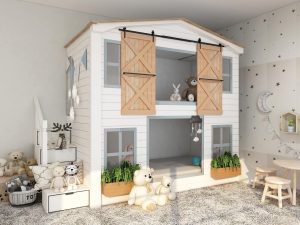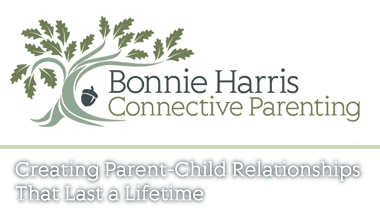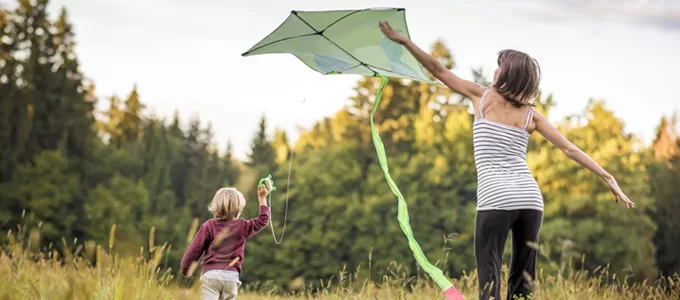
What are the activities that help with the development of children’s skills?
“PLAY! When children play, they are in fact learning. This is true for adults too. For infants, parent-guided play is great for eye tracking, voice and face recognition. These can all be done by holding, talking and singing to a baby or moving an object left and right so they can follow it with their eyes. The PlanToys PlayGym is great for infants. As they get older, they will work on fine and gross motor skills. Pulling our Rainbow Alligator or moving beers from one hive to another with our Beehive set. My favorite type of play for children is pretend play. They get to use their imagination and there is no limits with that. Children can develop those creative skills by playing with our Victorian Dollhouse, playing make believe with as a chef with our Wonky Fruits, or recording their adventures to share with the world using our Vlogger Set.“
What activities can parents implement for their kids to learn different languages?
“To learn a new language, repetition is the key. Also, children learn better from a friend than from a formal teacher. Parents can buy language companions like ROYBI Robot which teaches children new languages through conversation and repetition. They can create fun family moments, for example bringing the toy to the dinner table and playing the lessons related to food. This way not just the child but the entire family can learn and creates an exciting family bond. Parents should consider language tools that have a variety of lessons so they can incorporate these into their daily and fun activities. Language learning should be fun!”
Tips to Create a Multi-Age Playroom
“When creating a multi-age playroom I suggest using montessori shelves in lieu of a toy bin. This set up reduces clutter, which makes it easier to clean up, while also providing the children with minimal options to foster deeper independent play. Additionally, the toys can be displayed at an age appropriate height for each child. Of course, kids will want to explore each other’s things, in which case teaching children to use a Montessori mat (also known as a “work rug”) can minimize sharing disputes as they learn the items on a work rug are solely those persons at that time.”
What are the benefits of coding games for children?
“-Enhances Logic and Problem-Solving Skills: When kids code they develop skills such as brainstorming, creative thinking and decision-making skills all of which are necessary for solving a variety of problems.
-Develops Writing Skills: When children practice coding, they can develop the habit of eliminating excess. Therefore, making students more effective communicators and writers. In a world where attention spans are shrinking, they will learn how to be more concise.
-Builds Confidence: When kids code, they start to see mistakes as opportunities to learn and evolve. By having your child learn coding, you create an open platform for self-expression for them to voice their opinions.
-Unleashes Creativity Without Limits: Learning to code is like learning a new language. It lays a stable foundation for leadership, innovation and ability to connect ideas with solutions. By giving your child the ability to code, you are giving them a whole new tool to express themselves and their ideas.
-Secures Job Prospects In The Future: Looking at the world around us, it is easy to see how technology is becoming a necessary part of everything we do. A child who learns how to code will have an advantage with more employment opportunities available to them in the future. No matter which industry they decide to enter, coders are needed for every career.
-Helps With Storytelling: A writer’s tools for telling a story include simple words and sentences. Coders, on the other hand, have access to much more, including images, videos, animation and music all in addition to words! The flexible nature of programming allows children to create their story and have it react to user inputs.”
Best activities to keep your kids engaged while parents work
“It’s important to keep kids engaged while parents work and it’s not as difficult as it seems. Some of the best activities to try are:
-Having them help with simple tasks around the house
-Encouraging them to read or do educational activities
-Allowing them to play outside or with toys/games
-Setting up a designated “quiet time” for them to relax
-Creating a weekly or daily schedule for them to follow
With a little bit of creativity, parents can easily find ways to keep their kids engaged while they work. Try out the above activities and see what works best for your family!”
What are the best games to play with toddlers before going to bed?
“At that age, we would read picture books and also play with wooden building blocks before bedtime, building fun and magical things to prepare for happy a dreaming state.”
What are the essential tips to consider for keeping a playroom organized?
“Cube organizers are a fantastic way to organize toys and items in playrooms if you want to keep everything hidden well. The cube organizer can be used as a piece of furniture and can also create a nice wall display. You can choose how much stuff you want to be seen by keeping everything behind closed bins or leaving some toys out for display. The cube bins allow you to keep the toys put away and covered, as well as for quick cleaning. Plus, there are so many different colors and styles of those bins that you can always find something to match your room. Try labeling all of your bins by category for easy clean up and storage. You can use pictures or words. If you choose to use words, this can also help your child work on sight words and letters by beginning to recognize the word for the items that go in the bin. You can even further compartmentalize those bins with small plastic storage bins to hold all those little pieces that always get lost. Lids are great because it keeps the items contained, as well as hides the mess! If you need to do a last minute sweep of the room because company is coming over, you can easily throw everything into the bins and throw the cover on it. It also gives your toddler a place to be able to put their stuff away if she’s starting to clean up after herself.”
Marissa Labuz, Just Simply Mom
How can parents choose a developmentally appropriate toy?
“Research in early childhood development indicates that most children follow a common progression of physical & cognitive skills in their early formative years. The acquisition and continued development of specific skills can be generally correlated with specific ages. You will thus want to consider your child’s age along with a particular skill area or multiple areas to develop. Another important consideration is that the skill development process is progressive in nature. The brain learns & expands its network of information by taking in outside stimuli and associating it with stored data. Skills tend to build upon each other, step by step. So you will also want to select a toy that provides the opportunity for your child to progress or grow with the product, refining skills & building new ones over time. Discovery Toys Play Advisors are wonderful resources to help with toy selection for your children.”
Jim Garber, DT Learning Products, Inc.
How to create a fun indoor space for children?
“Kids need space to spread out and move around, so avoid trying to cram too much into your playroom, or adding unnecessary furniture, in order to leave as much space as possible for play. By the same token, any furnishings you do add should be kid-friendly. Stay away from glass or sharp corners that could be dangerous to young or active kids, and make sure that whatever you put in there is something you wouldn’t mind being used for kids’ fort-building ideas, or otherwise being climbed on or thrown about!”
Tips to create an educational playroom
“Create an educational playroom for your kids by adding some open-ended toys. Open-ended toys grow with your kid as they age. They allow your little ones to use their creativity and imagination during play. They can also be used differently each time they are played with. Some open-ended toy examples are Magnatiles, animal figures, or a play kitchen. I have a list on my website of 20+ open-ended toys that are great additions to an educational playroom! Also, adding items like puzzles, fine motor skill toys, and mess-free art activities give your child a wide variety of ways to learn and play. One tip I have is to also rotate toys in and out of the playroom so your kids will play with a specific set of toys and then be exposed to a new set of toys a few weeks later. This way, they won’t get bored with their toys and they will be excited to see a new set of toys. Kids learn by playing. By working alongside your little ones while they are playing, you can help them learn each and every day!”
What toys help with emotional development?
“Some of the toys that foster emotional development are ones that help children understand, label and discuss emotions. These could be things like books, dolls or stuffies with faces showing different emotions. Other ideas could include conversation starter card sets, and cooperative (not competitive) board games. Pretend play items (e.g., costumes, pretend kitchen or grocery store items), as well as puppets, can also help foster emotional skills since children have to take on the character they are pretending to be, which promotes a lot of emotional awareness and perspective-taking.”
What activities help to create a bond between parents and children?
“When choice of activity with children is intended to create a bond, the activity must be something the child is interested in, and it happens at a time when the parent can give undivided attention to the child and the activity. For bonding or connection to occur, the child must be invested and engaged in the activity rather than coerced into doing what the parent thinks would be fun. It’s best when the child is proficient at the activity and can be the leader or teacher of the parent. If the activity is something both child and parent enjoy, the parent must simply have fun and refrain from giving tips to the child for improvement.”
How To Design a Play Space That Inspires Creativity
What are the benefits for children about having a play kitchen?
“If you could only buy your child one toy it should be a play kitchen! So many skills can be learned while playing with this fantastic toy. I particularly love it as there are so many ways to use it to promote speech and language development and pretend play. Some other areas of development that are strengthened while playing with a toy kitchen are problem solving, fine motor skills, counting, categorization and many more!”
How to set up a play area that encourages speech in children struggling with speech disorder?
- “Use clear bins and organize toys by categories (building blocks, plastic food, plastic animals, cars/trucks, dolls, puzzles, games, etc.). Limited the number of items in each bin and rotate the items.
- Label each container. I recommend labeling each bin with two laminated cards secured to the bin with Velcro, one card with a picture of the type of items in the bin and one card with a word that describes the items.
This creates two opportunities to learn:
-You can put the cards up to your mouth while you say the word for the child.
-You can have the child match the pictures and words to the appropriate bins. - Clear bins that are hard to open or out of reach will foster communications in the form of requests. Use these opportunities to teach your child to look to you and ask for help. Use the bin labels and say “help”, “open”, “blocks” etc.
- Deliberate and repeated use of words (spoken and written) and pictures during play time will enhance your child’s communications skills.”
Pam Drennen, Kidmunicate
What are the benefits of small world play?
“Engaging in small world play is so important for children. Not only does it nurture their imagination, it also enables them to explore new materials, act out scenarios from real life, build language, practice social skills and gain an understanding of the world around them. Small world play also benefits children emotionally by providing an opportunity to express any concerns and worries they might be feeling through the safety of the characters and stories they create in their play.”
What is Imaginative Play and how to encourage it?
“Imaginative play is when children use their imaginations to create and enact stories or scenarios. This can be done solo or with others. It’s important to encourage imaginative play because it helps children develop creativity, communication, and problem-solving skills. There are many ways to encourage imaginative play. One is to provide open-ended toys that can be used in multiple ways. Another is to create opportunities for pretend play, such as setting up a pretend tea party or building a fort out of blankets and pillows. You can also encourage your child to use their imagination when they’re playing with you by asking them open-ended questions and suggesting different scenarios to act out. Above all, it’s important to be supportive and let your child know that their imaginations are valued.”
How playing can help to develop speech and language skills?
“Children learn BEST when they are naturally playing since it is meaningful, interesting, and relevant to them. They develop and practice speech and language skills by requesting, describing, and interacting with their toys and caregivers. Play is hard work for children as they learn to navigate their world and discover how things work. It is important to have simple, sturdy toys organized in a manner where children can explore but not be overwhelmed. To help keep things interesting, I suggest taking away 1/2 of a child’s toys and rotating them every month. It will keep children excited about playing and expose them to new vocabulary each month. For an extra challenge, you can store toys in a clear bin which is a challenge to open and/or out of reach. Children will see the toys and have to figure out how to communicate their need to play with those toys.”
What skills should parents encourage during playtime and how to do it?
“It really depends on the age, however, encouraging autonomy and independence is an important one for all ages. As parents, we sometimes take overplay with the goal of teaching language skills, critical thinking, etc. However, the magic happens when we step back. If a child is building a block tower and it keeps falling (and they get upset) then this is a perfect learning opportunity for critical thinking, managing emotions, and concentration. Let them figure it out but act as the guide. This is called scaffolding in research. You have an ultimate goal (building a block tower) and you need to create baby steps that guide your child’s thinking. Also, offering more independence during play means a child might get bored, which is great! They will have to invent stories, create something, and think outside the box, all of which are important for school.”
Dr. Cindy Hovington, Curious Neuron (@curious_neuron on IG)







